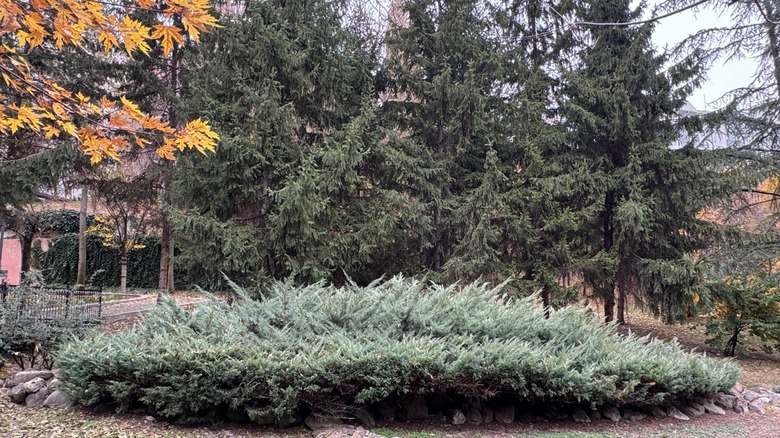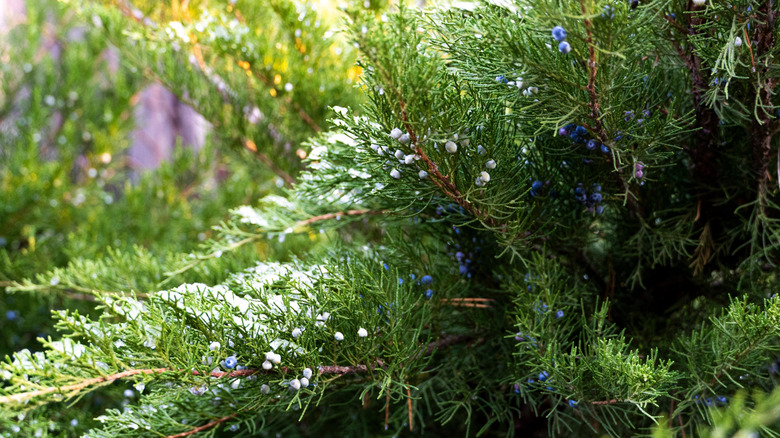The Invasive Cedar Tree Variety You Don't Want To See In Your Yard
There's a cedar tree spreading through North America that's far more aggressive than it looks, and it may be in your yard. It's known for its evergreen beauty and tough adaptability, but it's the same species transforming grasslands, pastures, and roadsides across much of the United States — and not for the better. Though native to the region, eastern red cedar (Juniperus virginiana) behaves like an invader when unchecked, and is listed as invasive in Wisconsin and Oregon.
Gardeners may plant eastern red cedar trees to maintain privacy and add a soft pop of color. The tree's success comes from characteristics that make it appealing to gardeners: tolerance of drought, salt, and poor soils, and a growth habit that thrives in full sun. These traits may feel like assets, giving you fast-growing privacy trees you can enjoy year-round for their looks and security, but in gardens that are near grasslands and rangelands, the trees are a huge problem. Eastern red cedar can spread exponentially, replacing native grasses and altering entire ecosystems.
Growing across USDA Zones 2 to 9, from Maine to Texas, these trees can tolerate both swampy soil and rocky ground. But that flexibility is also what allows it to invade where few other trees can survive. While its red-brown bark and aromatic wood make it seem like an ideal windbreak or ornamental, its unchecked spread means gardeners should think twice before adding it to the yard or keeping it there.
Why eastern red cedar is unwelcome
Eastern red cedar's invasiveness lies in how it reproduces and survives in altered landscapes. It can be found anywhere from pastures to fence lines since birds and small mammals spread its seeds. The tree depends on continuous seed dispersal, rather than root suckers, because it does not resprout after being cut. Its populations were kept low by periodic grassland fires, but contemporary fire suppression has eliminated that barrier, allowing cedar saplings to grow unrestrained into dense stands.
Because of their resinous leaves, those dense stands reduce animal fodder, intercept rainfall, and create fire threats, all of which change entire ecosystems. In as little as 40 years, grasslands can transform into closed-canopy woods with fewer native flora and a reduced variety of species. In agricultural areas, this also means lower productivity and more maintenance.
Proactive management is necessary if you want to control the spread of these trees. It may be necessary to cut larger trees at the base because any growth left above ground will survive, and this is sure to be safer for homeowners than burning them down. There are other evergreen trees that give you privacy all year round, too. The eastern white cedar (Thuja occidentalis) or Arizona cypress (Hesperocyparis arizonica) are better options for anyone looking for an evergreen tree screen; these hardy evergreens offer the same year-round structure and resilience without the invasive impact. Thoughtful tree choices can protect both your landscape and the ecosystems that surround it.

